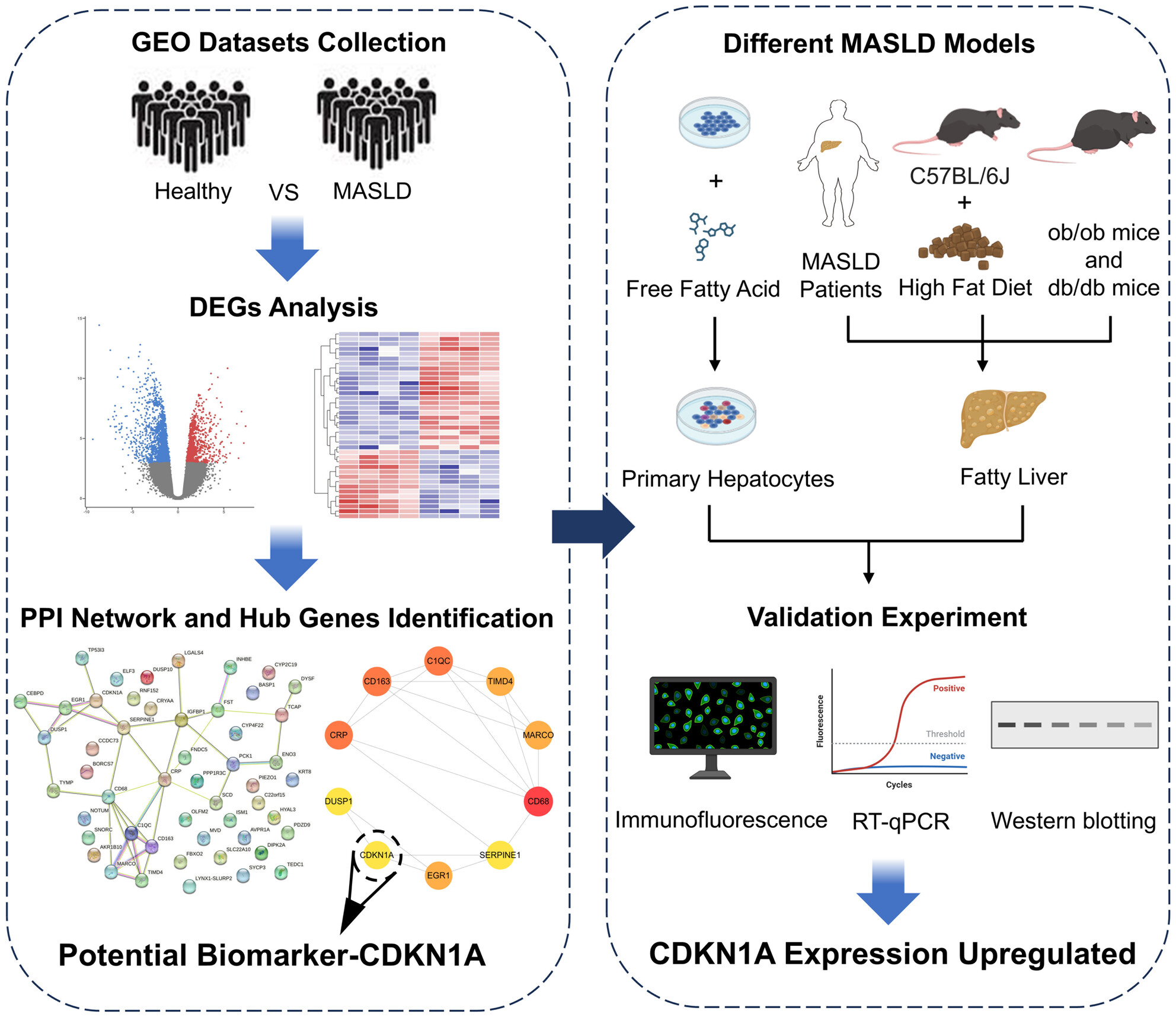Latest News
New Study in The FASEB Journal: Protein that stops cell division could serve as a biomarker or therapeutic target for liver disease
Friday, April 18, 2025 A protein that stops cells from dividing in response to damage or stress could be a new biomarker or therapeutic target for metabolic dysfunction-associated steatotic liver disease (MASLD), according to research published in The FASEB Journal. The protein, called cyclin-dependent kinase inhibitor 1A (CDKN1A), was consistently upregulated in patient datasets and animal models of the disease and its expression level correlated with disease severity in the study.
A protein that stops cells from dividing in response to damage or stress could be a new biomarker or therapeutic target for metabolic dysfunction-associated steatotic liver disease (MASLD), according to research published in The FASEB Journal. The protein, called cyclin-dependent kinase inhibitor 1A (CDKN1A), was consistently upregulated in patient datasets and animal models of the disease and its expression level correlated with disease severity in the study.
Obesity, diabetes, and high cholesterol can cause MASLD, a condition in which fat accumulates in the liver. Although lifestyle changes can reverse MASLD in many cases, it sometimes progresses to the more severe condition called metabolic dysfunction-associated steatohepatitis (known as MASH)—a main cause of liver damage in the U.S.
Currently, only liver biopsies or medical imaging methods such as ultrasounds are used to diagnose MASLD, and no medications have been approved yet to treat the disease. Aijun Qiao, Xiaojun Liu, and colleagues at several institutions in China therefore wanted to see whether analyzing publicly available patient datasets could lead them toward a diagnostic biomarker or drug target.
The researchers used several bioinformatics methods to analyze three publicly available patient datasets for genes that were differentially regulated in MASLD patients compared to controls. They found that CDKN1A was upregulated in all of the datasets. The protein encoded by this gene responds to cell stress and damage by preventing cells from dividing, shifting them to a senescent or inactive state. Further analysis of five patient datasets, including the initial three, demonstrated that CDKN1A transcript levels increased with disease severity.
In addition, expression of CDKN1A positively correlated with two clinical assessments: the disease’s activity score and the fibrosis stage. In liver tissue from patients, immunofluorescence staining showed that the protein was expressed at a higher level compared to tissues from control participants. Finally, CDKN1A protein and transcript levels were upregulated in mouse cells treated with fatty acids and in mouse models of MASLD.
The study’s results are consistent with previous reports suggesting an association between CDKN1A and MASLD. “Functionally, CDKN1A may contribute to MASLD progression by promoting hepatocyte senescence, exacerbating lipid toxicity, and fostering chronic inflammation and fibrosis,” says Qiao. “These findings highlight CDKN1A as a key player in MASLD pathogenesis and suggest its potential as both a biomarker for disease diagnosis and progression and as a therapeutic target for intervention.”
Funding: National Natural Science Foundation of China, High-level New R&D Institute of Department of Science and Technology of Guangdong Province, High-level Innovative Research Institute of Department of Science and Technology of Guangdong Province, Zhongshan Science and Technology Bureau, Chinese Academy of Medical Sciences Innovation Fund for Medical Sciences, Beijing Natural Science Foundation, and Shenzhen Science and Technology Program
Read the full article, “Identification of CDKN1A as a potential key risk factor in MASLD progression,” published in The FASEB Journal.